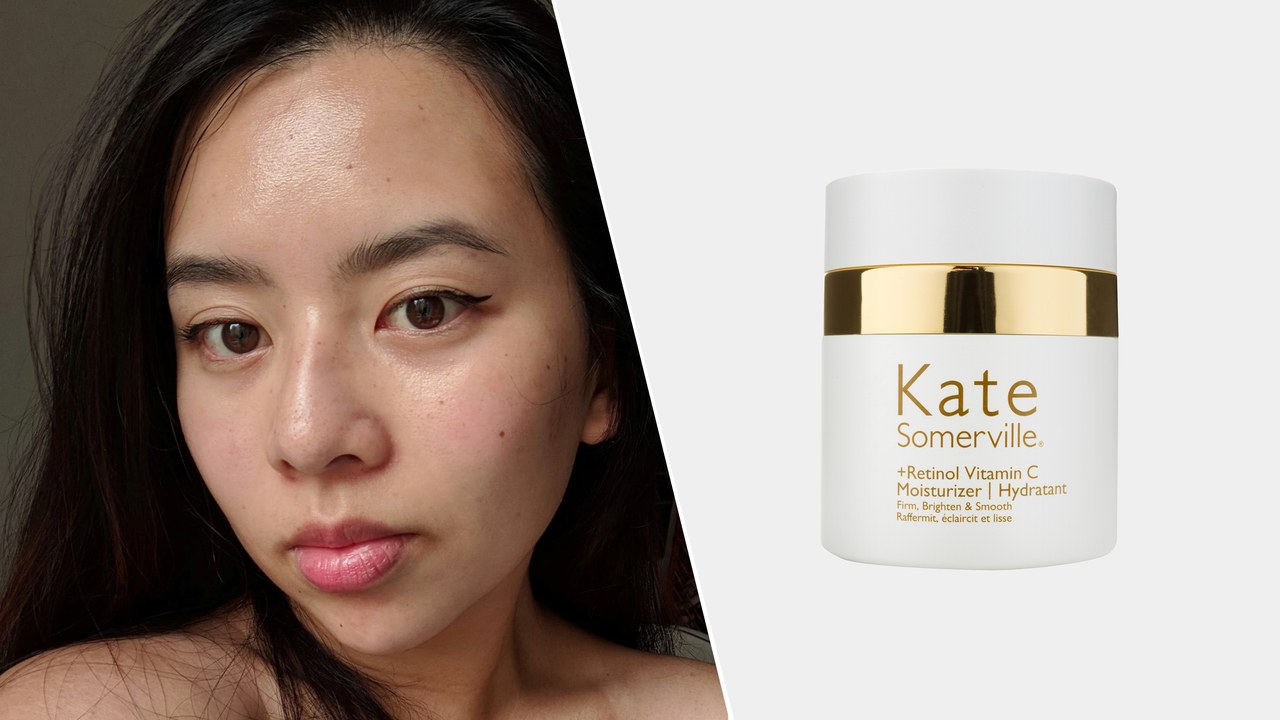The Best Retinol Cream I've Tried: Kate Somerville +Retinol Vitamin C Moisturizer

I have a confession: As much as I confidently advise all my friends, colleagues, and random strangers to slather their faces in the best retinol creams and serums, I rarely go anywhere near them myself. As someone who takes pride in being glowy, you’d think I’d be be stocking up. The vitamin A derivative has been proven to speed up the turnover rate of your cells, which translates to a smoother, clearer complexion. It’s one of the few ingredients that dermatologists have backed for years, and I’ve seen its effects on others firsthand, but my routine has remained conspicuously retinol-free for years.
The best way to explain my avoidance is that my previously acne-prone self was introduced to retinol through its prescription cousin, Retin-A, also known as tretinoin or retinoic acid. If you haven’t tried it before, it’s strong, much stronger than retinol. After one week of using it, you will realize exactly how much skin can flake off your face per day (a terrifying amount, as it turns out). If your doctor, like mine, instructs you to apply it more frequently than you should, you’re in for one red, inflamed complexion before your acne eventually clears.
One miserable year with Retin-A was enough to put me off anything that sounded remotely similar to the word. In theory, I knew retinol was much gentler—and extensive beauty research had taught me that the way to incorporate it into your beauty routine is gradually, using it a few nonconsecutive days a week and buffering with moisturizer if needed. In practice, I always ended up reaching for something else.
Fate intervened when I had one too many late nights and ate one too many slices of home-baked cake this summer, and my skin had some feelings about it. Aside from breakouts on my cheeks and clogged pores on my nose, my complexion just looked somewhat duller and sadder overall. I did what I always do in this situation and went into the giant cardboard box that doubles as my disorganized beauty closet. And in its depths, the first thing I unearthed just happened to be a gleaming bottle of Kate Somerville +Retinol Vitamin C Moisturizer. It seemed like the right time to welcome it into my life.
Resolving to proceed cautiously this time, I began slowly incorporating it into my routine for a week. “It takes two to four weeks to adjust to retinol,” says dermatologist Joshua Zeichner, M.D., confirming everything I learned the hard way. “I typically recommend applying retinol-based products every other night and advancing as tolerated over the next month.”
I followed his instructions, never applying it more frequently than every other night, and sometimes leaving an extra night in between for good measure. The brand says it’s possible to use this nightly, but I decided it wasn’t the right time for me to live on the edge. To be extra safe, I concentrated the moisturizer only on the areas that needed it most—dispensing a single pump of lightweight, silky cream out of the airtight tub. I’d then dab tiny amounts over layers of essence and serum on my nose, mid-cheeks, and chin. I was also careful to avoid the apples of my face, which are prone to mild rosacea and thus don’t really appreciate any disruption of the retinol sort. This process was strictly reserved for nighttime only (as retinol should always be)—and always followed by copious amounts of sunscreen during the day. I paired it with my latest year-round obsession, the Dynamic Skin Recovery SPF 50 Moisturizer from Dermalogica. I kept this up for two weeks, and—wow.




